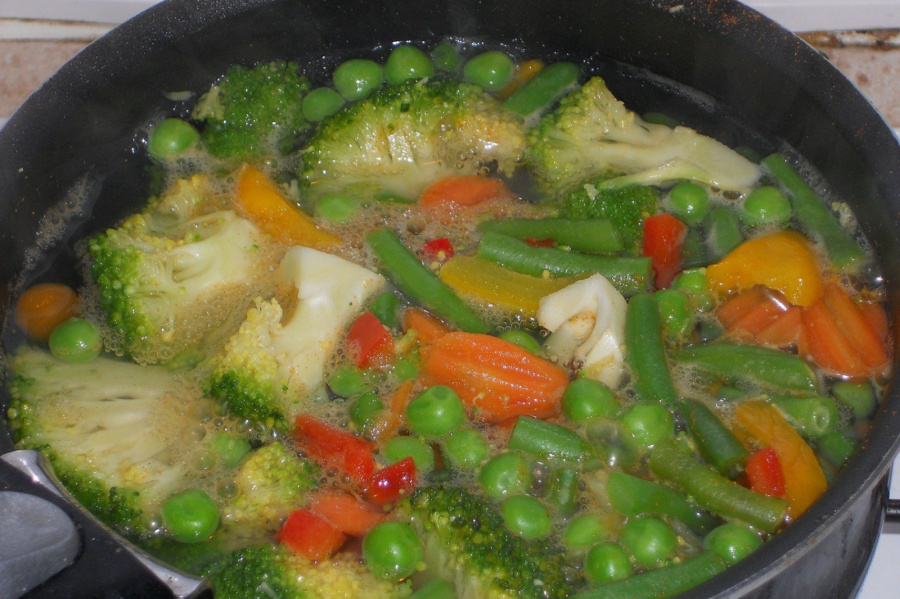
How to Boil Vegetables
Boiling vegetables will yield one primary advantage vs. other cooking methods – the vegetables will cook quickly if done properly, and that will help preserve water soluble vitamins like vitamin C. The chlorophyll in green vegetables will also stand a better chance of being preserved and even intensified.
Subscription Required For This Content
Boiling vegetables will yield one primary advantage vs. other cooking methods – the vegetables will cook quickly if done properly, and that will help preserve water soluble vitamins like vitamin C. The chlorophyll in green vegetables will also stand a better chance of being preserved and even intensified.
However, there are some disadvantage you should be aware of before pulling out the pot to cook all your vegetables. Boiling requires a large pot of water, and that does require more energy to properly heat up. You will also risk losing water soluble vitamins in the cooking water if you leave your vegetables to cook too long, or if you don’t add enough salt to the cooking water.
Here are some tips and instructions to keep in mind when boiling vegetables:
- Try to avoid cutting your vegetables too fine. Cut surfaces will increase nutrient loss during the cooking process.
- Use a large pot of water to keep the temperature constant once you add your vegetables. Small pots of water will cool rapidly when you add vegetables to the pot. This will slow the cooking process and your goal is to cook the vegetables in boiling water as quickly as possible!
- Don’t be afraid to add salt to the cooking water. You should add approximately 1 tablespoon (15 grams) salt per liter of water. The salt will act to reduce nutrient loss in the vegetable and soften the cell walls of the plant you are cooking…and that means quicker cooking times!
- Always bring the pot of water to a hard boil first, then add the salt and dissolve. Add your vegetables and bring the water back to a boil as quickly as possible (partially covering the pot will help).
- Check the vegetables often (this is my favorite part). You can remove one piece and probe the vegetable with a knife tip or simply taste it (watch out though…it will be hot). Remove the vegetables shortly before they are finished cooking. Drain well and lay out in a single layer on a baking tray or on a towel. If you went too far with the cooking, then plunge the vegetables in an ice bath or very cold water and try to cool them rapidly and prevent any further cooking.
- Green vegetables will begin to lose their color if overcooked or if they are exposed to acidic conditions. Some water is naturally high in alkaline, which can turn green vegetables into a vibrant lime green color, but also create a mushy consistency. I like to undercook my green vegetables and allow them to air cool. Their residual heat will help them finish cooking and I won’t have to worry about the PH level in the water or losing too many valuable nutrients.
- Starchy vegetables (like potatoes and parsnips) should be started in cold water. It is also helpful to acidify the water by adding a touch of lemon juice, wine or tartaric acid. Heat starchy vegetables gradually to a temperature just short of boiling. This will help the vegetable surface remain intact.
- Freshly boiled vegetables will lose moisture as they release steam. This will cause some shrinking. You can minimize this by tossing the cooked vegetables in a small amount of oil…really just enough to coat them.